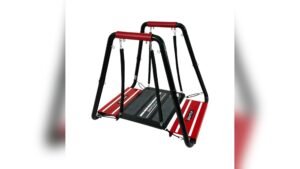Weight training has been a cornerstone of physical fitness for centuries, dating back to ancient Greece, where athletes used stones and other heavy objects to build strength. Today, the concept of a “set” is fundamental to any weight training regimen. Let’s delve into what a set is and why it’s essential for your workout routine.
Explore how many sets are required in weight training.
Table of Contents
ToggleDefinition of a Set
A set in weight training refers to a group of consecutive repetitions (reps) of an exercise. For example, if you perform 10 bicep curls in a row, you’ve completed one set of 10 reps. The number of sets and reps you perform can vary depending on your fitness goals, such as building muscle, increasing endurance, or improving strength.
Importance of Sets in Workout Routines
Sets are crucial for structuring your workout and ensuring you target specific muscle groups effectively. They help in:
• Progressive Overload: Gradually increasing the weight or number of reps in your sets helps your muscles adapt and grow stronger.
• Muscle Recovery: Properly spaced sets allow muscles to recover, reducing the risk of injury.
• Tracking Progress: Sets provide a measurable way to track your progress and adjust your workout plan accordingly.
Types of Sets in Weight Training
Understanding the different types of sets can help you tailor your workout to meet your specific fitness goals. Here are some common types:
Traditional Sets
Traditional sets involve performing a specific number of reps, followed by a rest period. This method is excellent for beginners and those looking to build foundational strength.
Supersets
Supersets involve performing two exercises back-to-back without resting in between. This method increases workout intensity and can save time.
Drop Sets
Drop sets involve performing an exercise until failure, then reducing the weight and continuing. This technique is excellent for muscle hypertrophy.
Benefits of Different Set Types

Different set types offer various benefits, making it essential to incorporate a variety of sets into your workout routine.
Muscle Growth
• Traditional Sets: Ideal for building foundational strength and muscle mass.
• Drop Sets: Excellent for pushing muscles to their limits, promoting hypertrophy.
Endurance and Strength
• Supersets: Increase workout intensity and cardiovascular endurance.
• Traditional Sets: Allow for controlled, steady strength gains.
How to Structure Your Workout with Sets
Structuring your workout effectively can make a significant difference in your results. Here are some guidelines:
Beginner Guidelines
• Start Slow: Begin with lighter weights and fewer sets to avoid injury.
• Focus on Form: Proper form is crucial for preventing injuries and maximizing effectiveness.
• Rest Periods: Allow adequate rest between sets to let your muscles recover.
Advanced Techniques
• Increase Intensity: Gradually increase the weight or number of reps in your sets.
• Incorporate Variety: Use different types of sets to target various muscle groups and prevent plateaus.
• Monitor Progress: Keep a workout journal to track your sets, reps, and weights.
Common Mistakes to Avoid
Avoiding common mistakes can help you get the most out of your weight training routine.
Overtraining
Overtraining can lead to injuries and burnout. Ensure you:
• Listen to Your Body: Take rest days and avoid pushing yourself too hard.
• Vary Your Routine: Incorporate different types of sets and exercises to prevent overuse injuries.
Poor Form
Poor form can lead to injuries and reduce the effectiveness of your workout. Focus on:
• Proper Technique: Learn the correct form for each exercise.
• Controlled Movements: Avoid using momentum to lift weights, as this can strain your muscles and joints.
Relevant Data Table For What is a Set in Weight Training:
| Set Type | Description | Benefits |
| Traditional Set | Performing a specific number of repetitions followed by a rest period | Builds foundational strength |
| Superset | Performing two exercises back-to-back without rest | Increases workout intensity |
| Drop Set | Performing an exercise until failure, then reducing the weight and continuing | Enhances muscle hypertrophy |
FAQs:
1. What is the ideal number of sets for muscle growth?
The ideal number of sets for muscle growth can vary depending on your fitness level and goals. Generally, performing 3-5 sets per exercise is effective for most people. Research suggests that multiple sets are more beneficial for muscle hypertrophy compared to single sets. For beginners, starting with 3 sets per exercise can provide a good balance between volume and recovery. As you progress, you can increase the number of sets to 4 or 5 to continue challenging your muscles.
2. How long should I rest between sets?
Rest periods between sets can significantly impact your workout’s effectiveness. For muscle growth, a rest period of 60-90 seconds is typically recommended. This duration allows your muscles to recover sufficiently while maintaining a high level of intensity. For strength training, longer rest periods of 2-3 minutes may be necessary to allow for full recovery and optimal performance in subsequent sets. Shorter rest periods of 30-60 seconds can be used for endurance training to keep the heart rate elevated and improve cardiovascular fitness.
3. Can I mix different types of sets in one workout?
Yes, mixing different types of sets in one workout can be highly effective. Combining traditional sets with supersets or drop sets can provide a comprehensive workout that targets multiple muscle groups and promotes both strength and hypertrophy. For example, you can start with traditional sets to build foundational strength and then incorporate supersets to increase intensity and save time. Drop sets can be added at the end of your workout to push your muscles to their limits and promote muscle growth.
4. How do I know if I’m overtraining?
Overtraining can lead to fatigue, decreased performance, and increased risk of injury. Signs of overtraining include persistent muscle soreness, fatigue, irritability, and a decline in performance. Monitoring your body’s response to your workouts is crucial. If you experience any of these symptoms, it may be time to take a rest day or reduce the intensity of your workouts. Ensuring adequate rest and recovery, along with proper nutrition, can help prevent overtraining and promote optimal performance.
5. What is the difference between a set and a rep?
A rep (repetition) refers to one complete movement of an exercise, such as one bicep curl or one squat. A set is a group of consecutive reps performed without resting. For example, if you perform 10 bicep curls in a row, you’ve completed one set of 10 reps. Understanding the difference between sets and reps is essential for structuring your workout and tracking your progress. Reps focus on the number of times you perform an exercise, while sets refer to the number of groups of reps you complete.
Conclusion:
Understanding and effectively utilizing different types of sets in weight training can significantly enhance your workout results. By incorporating a variety of set types and structuring your workouts properly, you can achieve your fitness goals more efficiently while avoiding common pitfalls like overtraining and poor form.
Pic credit: Gettyimages
Post References:
What Are Reps and How Can You Use Them to Improve … – Healthline
The Ultimate Guide To Reps And Sets In The Gym – Onelife Fitness







